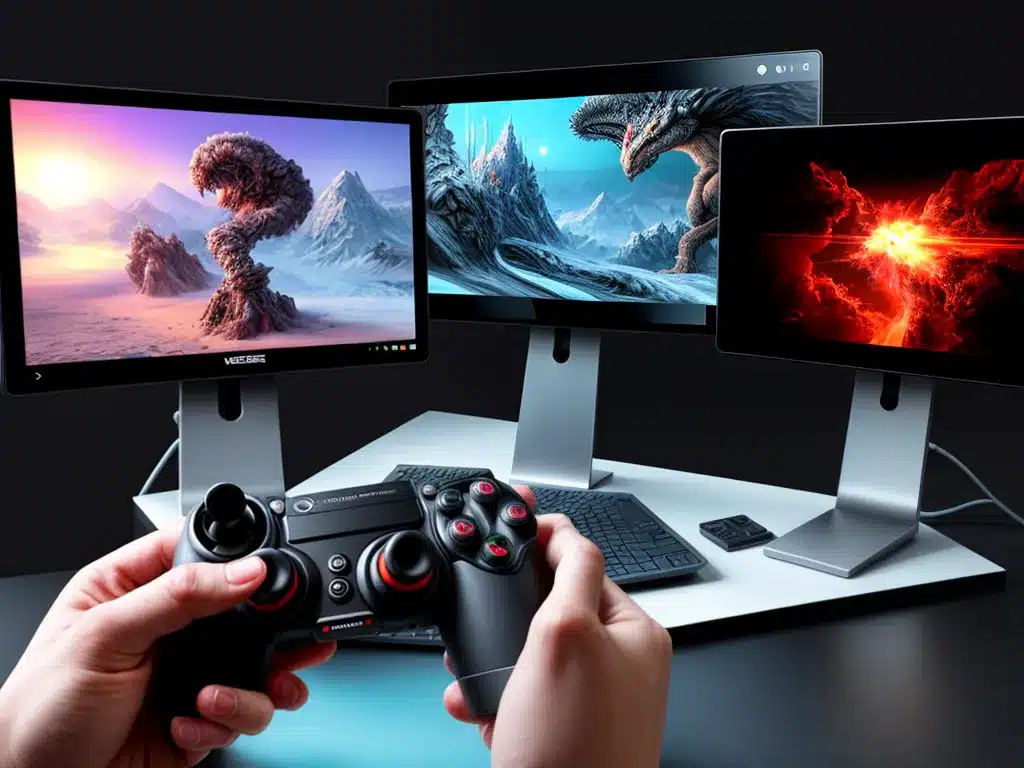Introduction
For years, mobile graphics processors (GPUs) have lagged behind their desktop counterparts when it comes to raw performance and capabilities. However, recent advancements in mobile chip design and manufacturing are quickly closing the gap. In this article, I will examine the evolution of mobile GPUs and evaluate whether they can finally match desktop GPUs in the coming years.
The Gap Between Mobile and Desktop GPUs
Desktop GPUs have historically held a commanding performance lead over mobile chips. For example, Nvidia’s desktop GeForce RTX 3080 offers around 30 teraflops of power, while the mobile RTX 3080 in gaming laptops delivers only 16 teraflops.
Several factors account for this gap:
-
Power limitations – Mobile chips need to be extremely power efficient to preserve battery life in phones and laptops. Desktop GPUs are plugged into wall outlets, allowing for far more wattage.
-
Thermal constraints – Mobile form factors limit the size of heatsinks and fans. Desktop GPUs can dissipate far more heat.
-
Die size – Larger silicon dies make economic sense for desktop GPUs but not mobile. Bigger dies with more transistors boost performance.
-
Memory bandwidth – Desktop GPUs utilize more channels, banks, and wider memory buses. Mobile GPUs have narrower, power-efficient memory subsystems.
Recent Advancements in Mobile Graphics
While mobile GPUs are still behind, the gap has been narrowing with each generation. For example, the latest Snapdragon 8 Gen 1 chip for Android phones has a new Adreno GPU that is up to 30% faster than the previous generation.
Several improvements are responsible for these mobile graphics boosts:
-
Newer manufacturing nodes – Chipmakers like TSMC and Samsung have started producing mobile GPUs on 4nm and 5nm processes. These nodes allow for higher transistor densities and clocks while using less power.
-
Advanced chip architectures – Mobile GPU architects are employing new techniques like unified cache and tile-based rendering to boost efficiency.
-
Faster memory – The latest LPDDR5X and GDDR6 memory standards provide more bandwidth for mobile GPUs.
-
Better thermal solutions – Vapor chamber cooling and GPU frame mounting allow mobile form factors to dissipate more heat.
-
AI acceleration – Dedicated AI processing units on chip are optimizing graphics while saving power.
Performance Projections
At their current pace, mobile designs could match mid-range desktop GPUs in just 2-3 years. For example, leaks indicate the Snapdragon 8 Gen 2 may hit 25 teraflops, putting it in the league of a desktop RTX 3060.
Within 5 years, mobile performance could rival high-end desktop GPUs like the RTX 3080. This will require chipmakers to push mobile GPUs to their limits:
-
5nm to 3nm nodes – Continued manufacturing advancements will permit more transistors while enhancing efficiency.
-
Advanced chiplet designs – Chiplets allow different components like CPU and GPU to be packaged together for power savings.
-
Faster LPDDR5X memory – Increasing memory clocks and bus widths will remove bandwidth bottlenecks.
-
Enhanced cooling – Vapor chamber and heat pipe solutions must evolve to dissipate upwards of 150 watts on mobile form factors.
Of course, desktop GPUs will also improve in that timeframe. But the rate of advancement in mobile designs is impressive and rapidly closing the gap.
Challenges Remaining
While the mobile graphics horizon looks bright, some intrinsic limitations of the form factor remain. Desktop GPUs will likely maintain advantages in these areas:
-
Peak power – Desktop GPUs will continue using orders of magnitude more wattage, allowing extreme performance.
-
Upgradability – Desktop GPUs can be swapped out for newer models. Mobile chips remain fixed at purchase.
-
Connectivity – Desktops support more external monitors and higher bandwidth I/O like PCIe 5.0.
-
Cost efficiency – Large, sophisticated desktop GPUs make more economic sense for gamers than mobile designs.
Conclusion
It’s an exciting time for mobile graphics. After years of lagging behind desktop performance, mobile GPUs are closing the gap at a rapid pace. Within just a few years, mobile chips stand poised to match mid-range desktop GPUs thanks to manufacturing improvements, new architectures, and more. While limitations around power and upgradability remain, the era of desktop graphics dominance appears to be ending. Going forward, expect your phone or laptop’s mobile GPU to finally pack the graphical punch you need.













